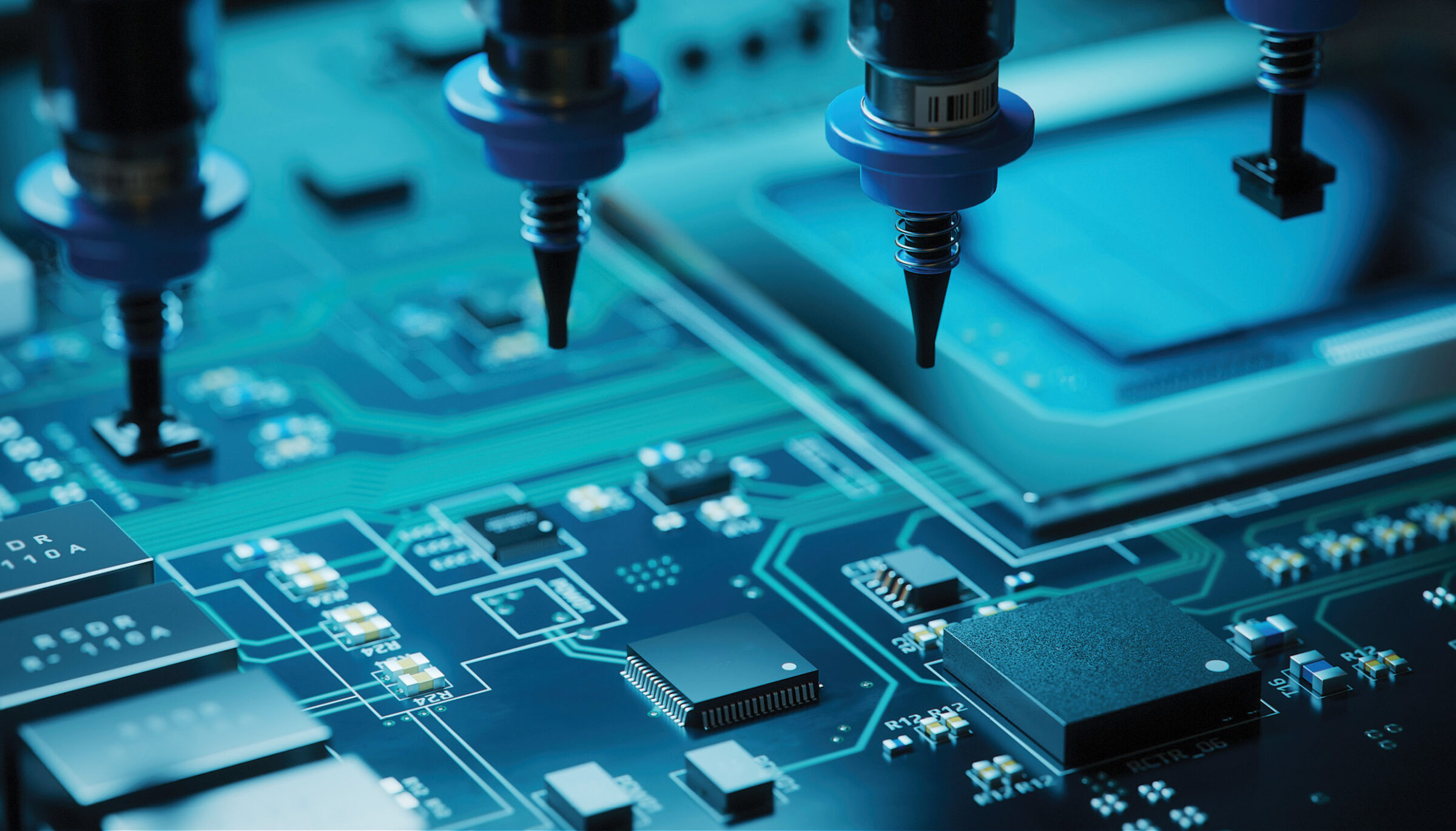When demand is unprecedented, the response needs to be too.
Hoosier Energy and its 18 member systems across Indiana and Illinois continue to see an increase in economic development inquiries across the board, driven by federal legislation, a surge in reshoring and the energy transition, among other factors.
Look no further than WestGate@ Crane Technology Park in the Indiana Uplands community of Odon in Daviess County, Indiana, where multiple semiconductor technology companies are investing hundreds of millions of dollars and creating hundreds of jobs to serve the massive wave of chip manufacturing now reshoring across the nation.
Supported by the Indiana Regional Economic Acceleration and Development Initiative (READI) and incentives from Hoosier Energy and its member system, the campus recently announced NHanced Semiconductors — a leader in advanced packaging of semiconductors — as a tenant of the new microelectronics campus located at the Naval Surface Warfare Center, Crane Division.
The campus has since announced it will welcome three other companies in the sector: Everspin Technologies; Trusted Semiconductor Solutions; and Reliable MicroSystems.
Look again at some of the key words in those company names — “trusted,” “reliable,” “enhanced” — and you’ll get an idea of where Hoosier Energy’s already competitive incentives offerings plan to go next to adapt to current market needs and create maximum flexibility for fast-growing companies.
“We continue to see an increase in inquiries across the board with demand far exceeding anything we have seen before,” says Hoosier Energy Economic Development Manager Harold Gutzwiller. “The CHIPs Act, advanced manufacturing, hyperscale data centers, and a nationwide shift toward cleantech are all driving factors in this growth.
“This is why Hoosier Energy established its current growth policy,” he says, “and is in the process of evolving its programs to meet the demands of these new types of opportunities.”
As Requirements Grow, So Will Flexibility
Hoosier Energy is a generation and transmission cooperative (G&T) with headquarters in Bloomington, Indiana, that provides electric power and services to 18 member distribution cooperatives in central and southern Indiana and southeastern Illinois, with a service territory spanning 59 counties. The cooperative’s 2022 economic development work saw some $1 billion invested by corporate end users in Hoosier Energy territory, leading to around 1,200 new jobs.
But there’s always room for improvement. After all, why wouldn’t a utility and its member cooperatives seek to emulate the continuous improvement and modernization processes espoused by its most advanced manufacturing customers? The result in this case: speed to market and increased clarity for those very customers.
In 2022, Hoosier Energy launched the Cooperative Power Management Program (CPMP), designed to compensate industrial and large commercial member-consumers for electric load flexibility. Designed as a fair, viable and value-driven program to address emergency and economic events, the CPMP provides market capacity value to participants by incorporating load curtailment and access to Distributed Energy Resource (DER) opportunities.
The evolution of programs and operations didn’t start yesterday. It’s been part of Hoosier Energy culture since the beginning in 1949. Hoosier Energy employees certainly know the meaning of continuous improvement, having taken part over the past year in the organization’s new Rural Electric Continuous Improvement Program (RECIP). Training sessions over several months already had generated more than 120 improvement ideas for business operations by September 2023.
Those ideas will come in handy as economic development projects today are more competitive than ever. Electric requirements continue to increase, especially as business attraction efforts by Indiana Economic Development Corp. (IEDC) focus on industries with large utility requirements. Renewables and low-carbon energy are becoming more of a requirement than an option for consumer-facing industries, internationally based companies and next-generation manufacturers.
“We must remain flexible, competitive and positioned to land and serve larger, more complex projects …”
— Hoosier Energy Growth Statement
And it all has to take place with great dispatch. As IEDC expresses it, “speed is the new incentive.”
So Hoosier Energy has set out to evaluate its existing economic development program and design a robust package of tariffs, rates, incentives, products and services attractive to prospective consumers because of their optionality, while maintaining reliability, affordability and sustainability.
That includes options to allow maximum flexibility and competitiveness for large and “mega” loads that typically bring significant capital investment and job creation and are often considered transformational for a community. The commitment is captured in a two-part growth statement:
“Hoosier Energy will continue its approach for traditional, more measured growth opportunities while identifying paths to say ‘yes’ for more complex and challenging economic development projects.”
“We must remain flexible, competitive and positioned to land and serve larger, more complex projects while ensuring reliability, affordability and resiliency, and mitigating risk for our cooperative, member systems and member-consumers.”
New Sites Part of the Picture
How do Hoosier’s revamped incentives blend with its commitment to infrastructure improvements and its commitment to site development to offer pitches that are getting noticed by companies?
“Both the energy and economic development landscapes are in a state of evolution,” Gutzwiller says. “This transition has led us to reevaluate how we can best accommodate the acreage and electric demand requirements we’re currently seeing in many sectors. As part of the IEDC 5 ‘E’ Strategy, the state is having unprecedented success in generating new growth opportunities in the data center, semiconductor and automotive/battery sectors throughout Indiana.
“Hoosier Energy is working closely with our member cooperatives and the IEDC to identify new sites with the acreage and utility infrastructure best aligned to meet these massive new requirements,” Gutzwiller says. “Hoosier Energy proactively adopted a new growth strategy that positions us to meet new demands with optionality and flexibility while also maintaining affordability, reliability and resiliency for our members.”
This Investment Profile was produced under the auspices of Hoosier Energy, a generation and transmission cooperative headquartered in Bloomington, Indiana, that provides electric power and services to 18 member distribution cooperatives in central and southern Indiana and southeastern Illinois who serve more than 760,000 consumers. For more information, visit hoosierenergy.com.

